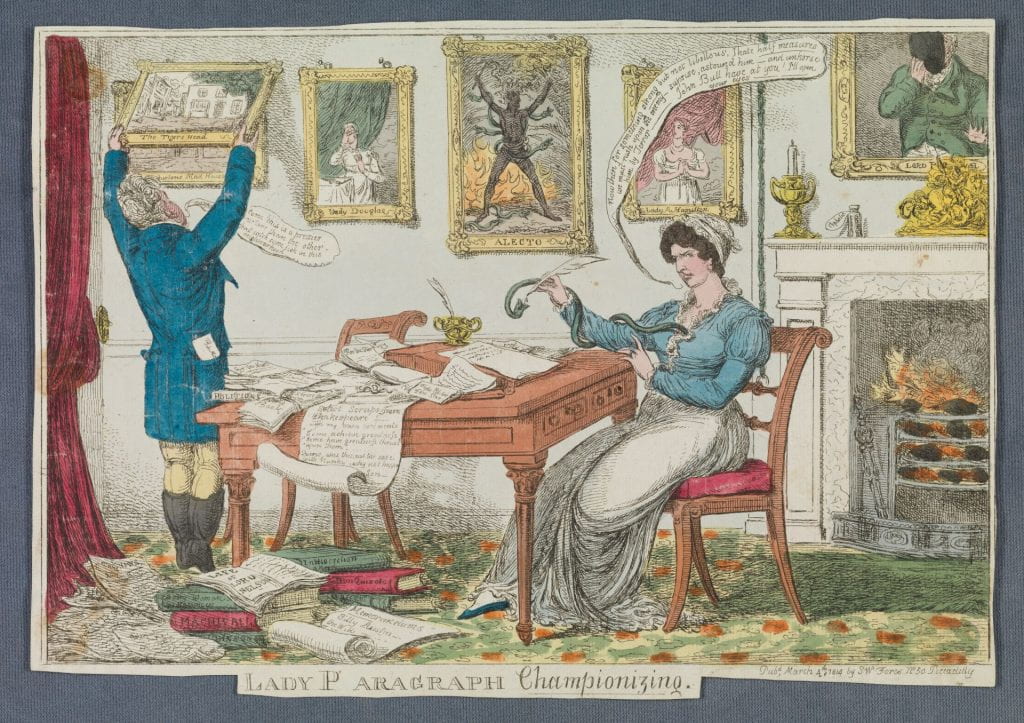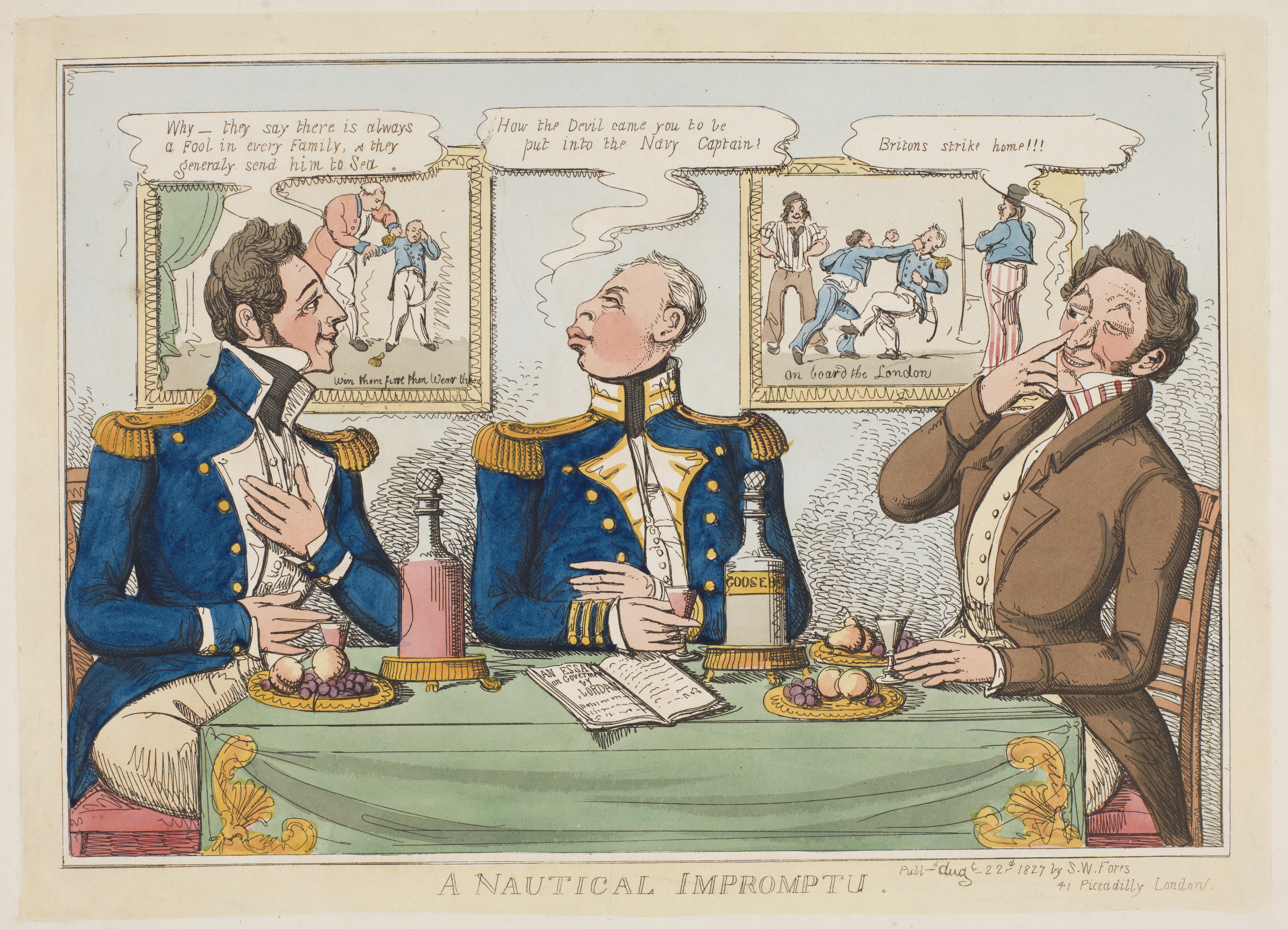
“The Regent, as Macheath, wearing military uniform and heavily shackled, stands between Mrs. Fitzherbert, who kneels at his feet (left) removing his leg-irons, and Lady Hertford (right), who stands beside him taking the fetters from his wrists (inscribed ‘Restri[ctions]’), He sings “How happy could I be with either.” Mrs. Fitzherbert, a long rosary dangling from her waist, says: “The Benediction of His Holiness light on the Defender of Our Faith.” Lady Hertford, sultana-like in a jewelled turban, says: “You heard of the Row & the Rowly Powly Song before Our house the Other Night?!!” Behind and on the right Eldon stands full-face between Perceval and McMahon, who face each other in profile. Perceval, in his Chancellor of the Exchequer’s gown, and holding a brief-bag, says: “The Greys won’t move without their own Coachman tho the Brewer [Whitbread] has offerd his black to do the dirty Work.” Eldon, in a huge wig, holds the Purse of the Great Seal; he says: “We must hire Jobs for the Night Work but we are Pro’ Rogued.” McMahon, in military uniform, has a number of ribbons and stars hanging over his arm; he says: “These Garters & Ribbonds are all returned.” On the wall are two pictures: George Hanger, bestriding his pony (as in No. 8889) with a burly bailiff seated behind him, rides in the direction of a sign-post, with a noose hanging from it, pointing ‘To the Kings Bench’. This is ‘George & his Hanger On, takeing a ride together to a Lodging in Surry’. The other is Sheridan as Bacchus, but dressed as Harlequin (cf. British Museum Satires No. 9916), bestriding a cask of ‘Old Sherry’.”–British Museum online catalogue.
- Printmaker: Cruikshank, George, 1792-1878, printmaker.
- Title: Polly & Lucy takeing off the restrictions [graphic] : vide Beggars opera / G. Cruikshank sulp.
- Publication: [London] : Published March 1812 by J. Jonhston, 98 Cheapside, [March 1812]
812.03.00.03+
Acquired February 2024



 “Two elderly men, in old-fashioned dress, play chess, seated at a small table, lit by two guttering candles. One moves, the other watches with intense concern. Each has a deeply interested spectator leaning on the back of his chair. All four are caricatured. A small dog lies on the ground. A large fire burns in the grate (right). Over the chimney-piece is the lower part of a whole length portrait. On the wall behind the players are three pictures: one of a man playing ninepins outside a rustic inn, with a donkey looking over a paling, is flanked by a picture of a horse and by a landscape.”–British Museum online catalogue.
“Two elderly men, in old-fashioned dress, play chess, seated at a small table, lit by two guttering candles. One moves, the other watches with intense concern. Each has a deeply interested spectator leaning on the back of his chair. All four are caricatured. A small dog lies on the ground. A large fire burns in the grate (right). Over the chimney-piece is the lower part of a whole length portrait. On the wall behind the players are three pictures: one of a man playing ninepins outside a rustic inn, with a donkey looking over a paling, is flanked by a picture of a horse and by a landscape.”–British Museum online catalogue.